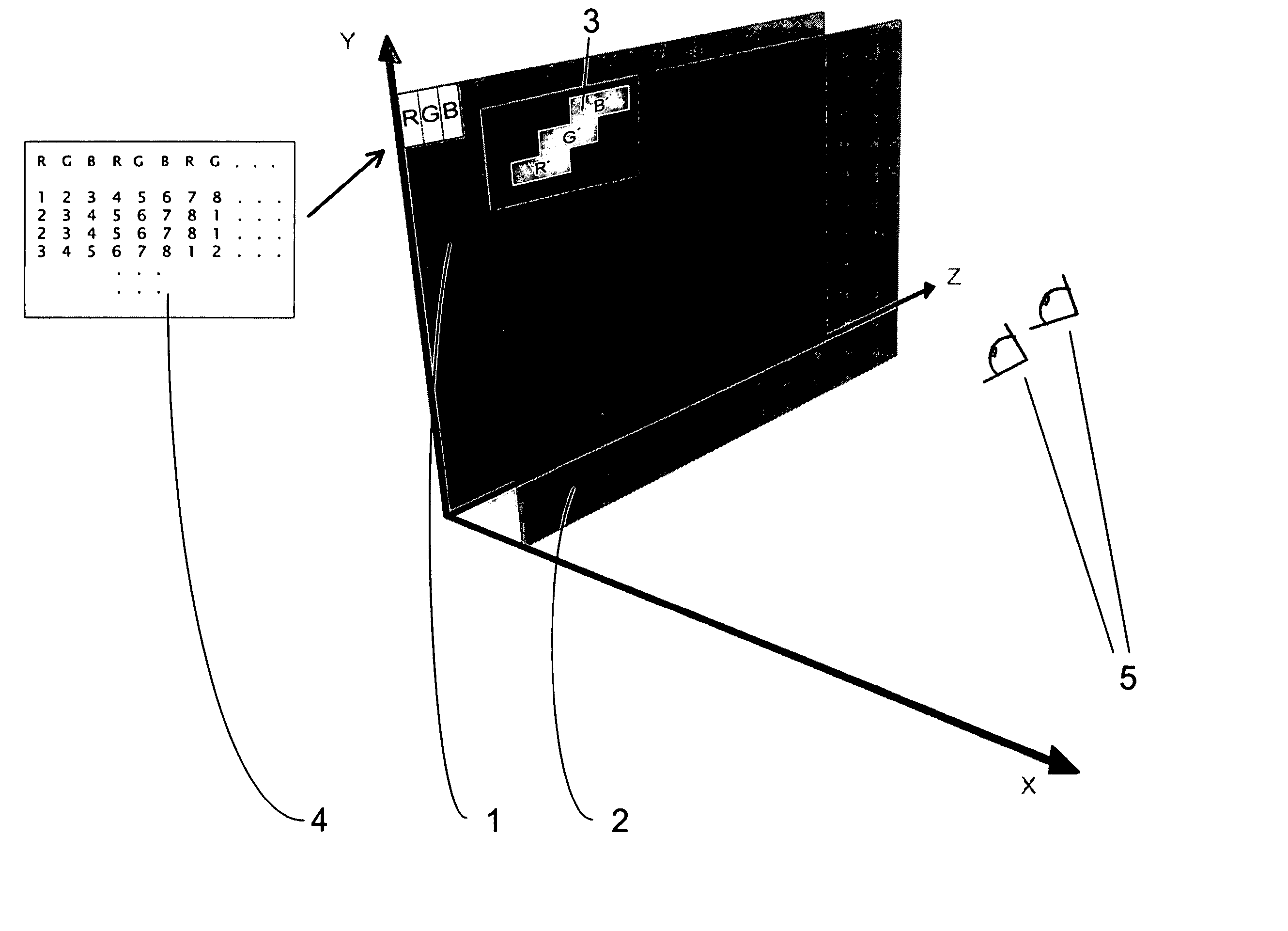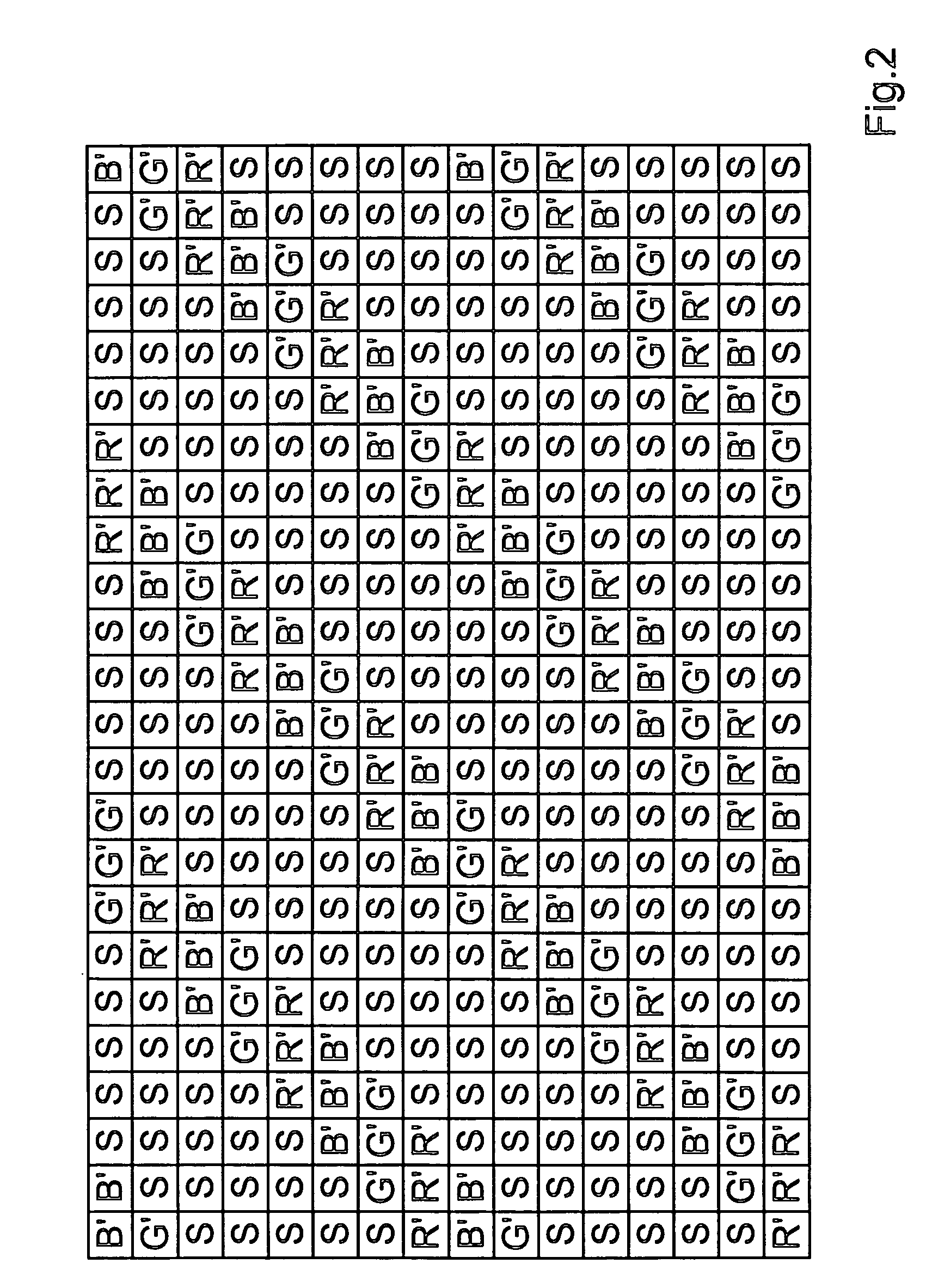Method for simulating optical components for the stereoscopic production of spatial impressions
a technology of optical components and spatial impressions, applied in the field of simulating spatial impressions, can solve the problems of high cost, laborious and expensive, and inconvenient teaching of this publication, and achieve the effect of reducing the cost of filter design, and reducing the cost of image processing
- Summary
- Abstract
- Description
- Claims
- Application Information
AI Technical Summary
Benefits of technology
Problems solved by technology
Method used
Image
Examples
Embodiment Construction
[0006] Proceeding from the prior art described, it is the purpose of the present invention to identify a method by which the spatial impressions to be produced by means of an image generator and a filter array can be simulated. The simulation method should be implementable by the simples and most cost-effective means. Further, it is the purpose of the invention to describe an arrangement for implementing the method.
[0007] According to the invention, the problem is solved by a method for the simulation of spatial visual impressions, comprising the following steps: [0008] a) Specification of the geometry of an image generator, especially with regard to the structure and size of its image elements, [0009] b) specification of the geometry of a filter array, especially with regard to the structure and size of its filter elements, [0010] c) specification of a spatial arrangement geometry with regard to the image generator and the filter array in a three-dimensional coordinate system (X,Y...
PUM
 Login to View More
Login to View More Abstract
Description
Claims
Application Information
 Login to View More
Login to View More - R&D
- Intellectual Property
- Life Sciences
- Materials
- Tech Scout
- Unparalleled Data Quality
- Higher Quality Content
- 60% Fewer Hallucinations
Browse by: Latest US Patents, China's latest patents, Technical Efficacy Thesaurus, Application Domain, Technology Topic, Popular Technical Reports.
© 2025 PatSnap. All rights reserved.Legal|Privacy policy|Modern Slavery Act Transparency Statement|Sitemap|About US| Contact US: help@patsnap.com



